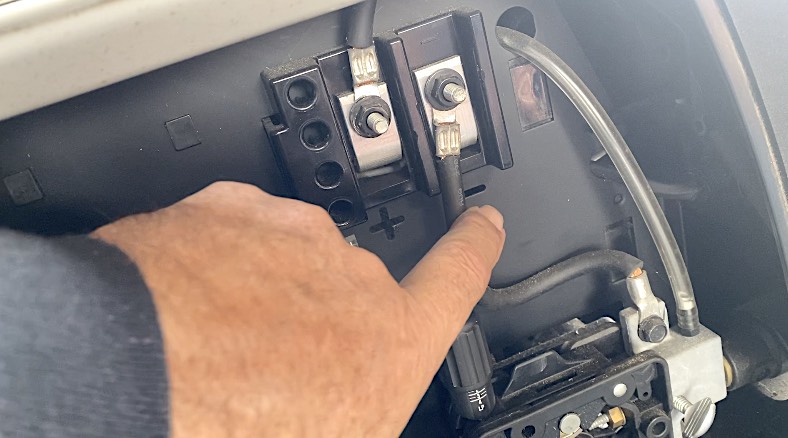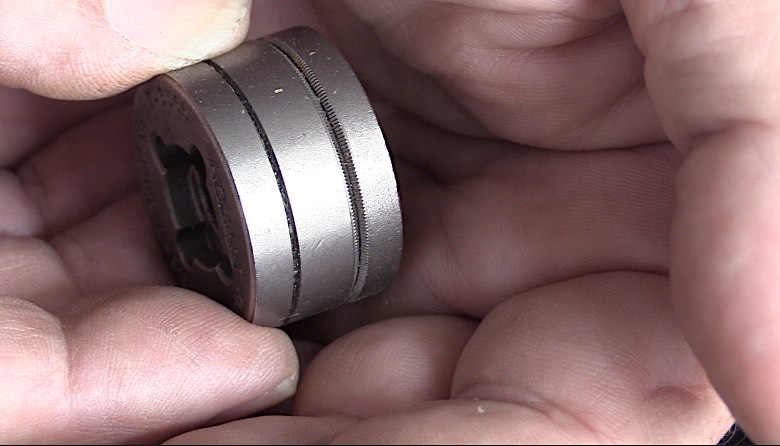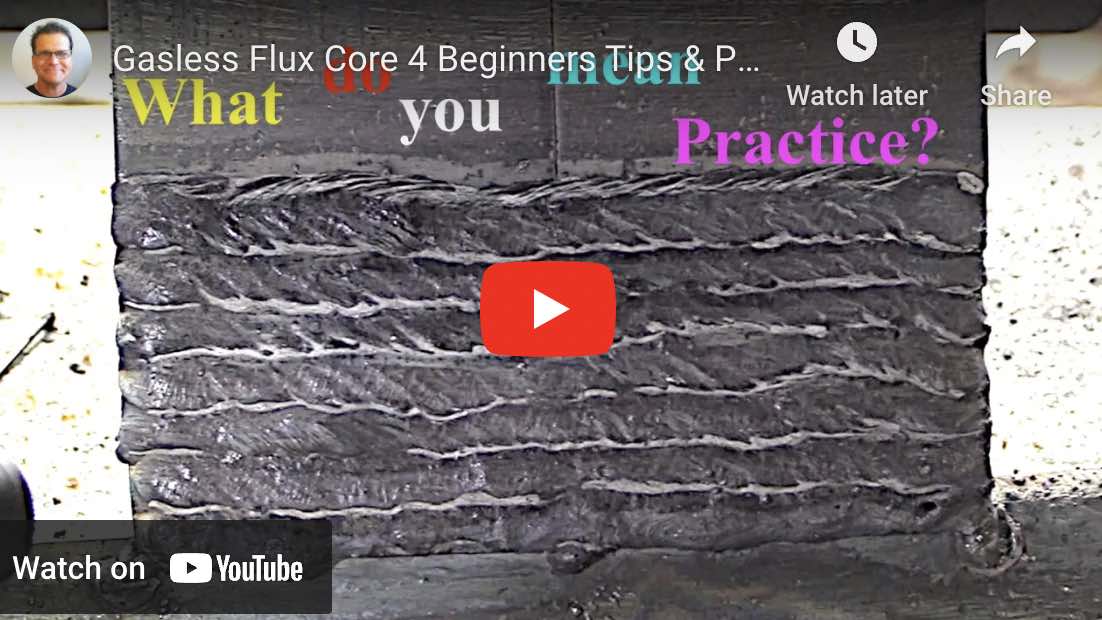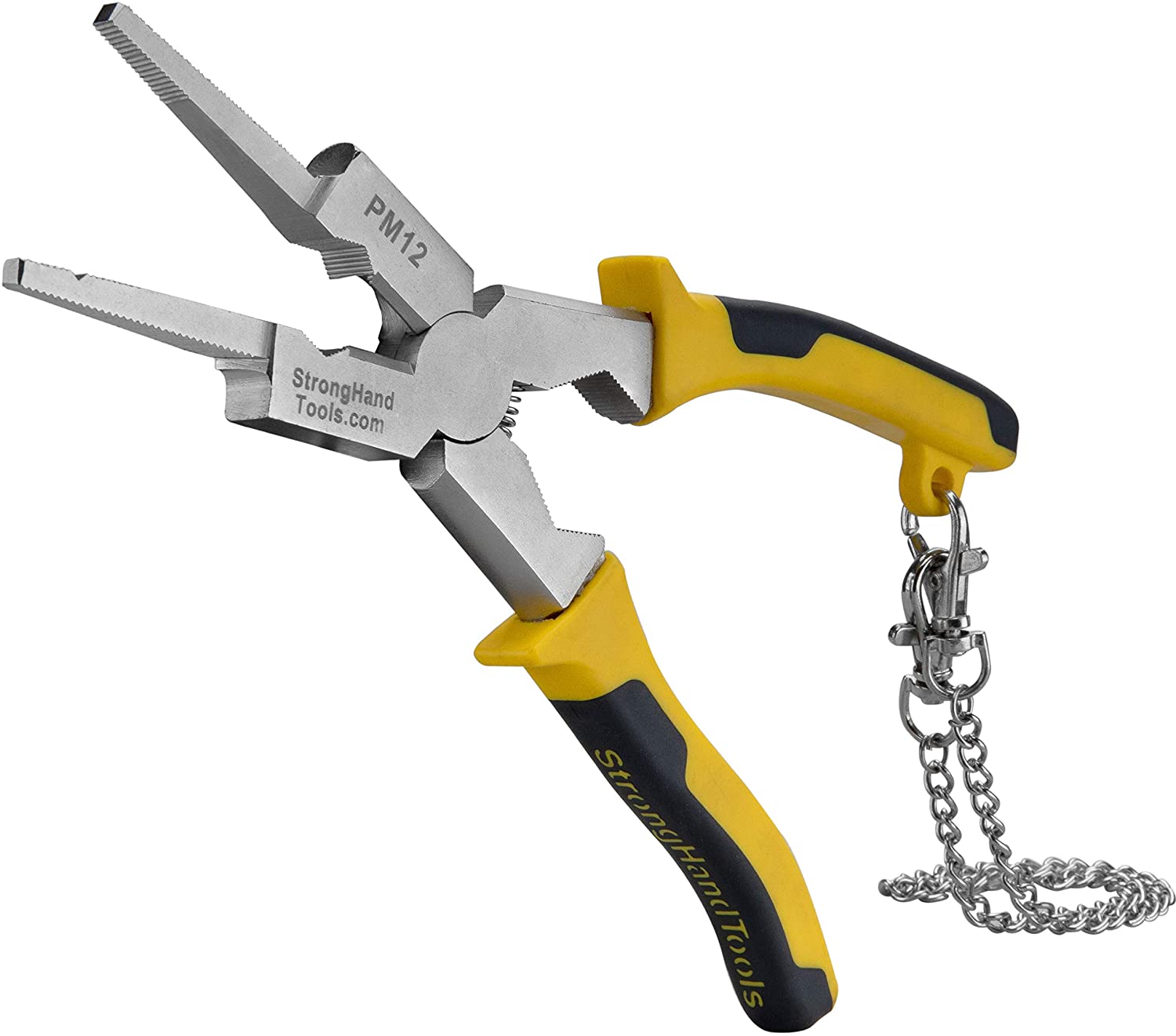Flux Core Welding for Beginners - Flux Core Basics with the #1 Mistake Fixed
the video above has over one million views on Youtube
After you get your setup right, practice along with the video below
This is flux core welding for beginners but these basic topics might just help you get better flux core welds even if you are not a beginner:
- how to set up the machine the right way
- choosing the right drive roller setup
- how to set voltage and wire feed speed
- how to set the tension on the drive rollers
- how to use the right stick out and what happens when you don't
- how to get a secure ground connection and why you need one
MIG pliers in Stock at Weldmonger.com
Using good quality flux core wire
Lincoln NR211 flux core wire seems to be the most available gasless flux core wire since it is sold in a lot of big box stores like Home Depot.
But there are other good ones too. Hobart fabshield 21b is also a pretty good choice.
The spool of NR211 I had was very rusty so I stripped off several layers in order to get to clean wire.
Caution: It is important to note that some gasless flux core wires are rated for single pass welds only.
Setting up a mig welder the right way for flux core welding - Use the right polarity DCEN

One main thing you need to know about flux core welding is that it requires the polarity to be on DCEN. electrode negative -
Since a lot of mig welders are set up to run either with bare wire mig with shielding gas…or self shielded flux core, a lot of mig welders are set to DCEP electrode positive aka reverse polarity with no knob or switch to change polarity that is obvious to a beginner.
That is because on many mig welding machines, switching the polarity involves switching the electrode connections.
And since that connection is. often inside the machine , its even less apparent.
Mig welding on reverse polarity dcep works great
Trying to weld with self shielded flux core on DCEP will make you cuss.
So what is polarity?
Polarity in welding refers to whether your electrode is positive or negative.
In bare wire mig welding, the electrode is where the mig gun is connected.
Some machines have a pigtail on the front that makes it very easy to change polarity.
On other machines, you have to undo bolts and switch wires inside the wire feeder cabinet.
drive roller setup for flux core wire

Make sure to select the right drive rollers for the size wire you are using.
Knurled drive rollers work best because of the reduced tension used to feed flux core wire.
How to set the right drive roller tension
You are going to want less tension on flux core wire.
Why? ...because its hollow. Flux core wire has flux inside and can be crushed by using too much drive roller tension.
I set my tension by pinching the wire as it comes out of the contact tip with my fingers while wearing a glove.
I set tension to the point where I can stop the wire feeding by pinching the wire with medium pressure.
Voltage and wire feed speed for flux core welding
Most reputable mig welding machine manufacturers put a settings chart inside of the wire feed door.
I have found that for flat and horizontal welding , these recommended settings are pretty good to get you started.
But make sure to carefully line up each column and chose the right wire type and diameter etc.
The same settings used for bare wire mig will not always work for gasless flux core.
what is the right stick out for flux core welding?
For .035" NR211 flux core wire, the recommend stick out is around 5/8".
Lincoln uses a term called CTWD which stands for contact tip to work distance.
Stick out is usually slightly less because it refers to distance to the arc and not the work.
Either way, be careful not to use an excessively long stickout.
Why you need a good ground connection
Wire fed processes like bare wire mig and flux core really need a good secure ground connection...more so than other welding processes.
If your ground clamp is on an area where there is mill scale, paint, rust, or other coating, you risk losing the connection intermittently.
When that happens, the wire stubs momentarily and can make you think you need to adjust your settings.
Take a minute to make sure you have a secure ground and save yourself some heartburn.
People Also Asked these questions about self shielded flux core welding for beginners
How do you know what settings to use for self shielded flux core?
Reputable manufacturers of self shielded flux core provide data sheets with recommend settings. Most of these are available online.
To get in the ball park, use the settings listed on the chart inside the door of your mig welder to get you started. If your welder has no settings chart, then search google for “mig welding chart” but make sure to use the settings for gasless flux core wire and set polarity to DCEN.
What is the right stickout? ( distance from the contact tip to the arc)
The right stickout varies with wire diameter but for .035” diameter its around 5/8”
What is the right angle? Should I push or pull?
Pulling is recommended but pushing can work too.. and that’s a good thing because sometimes you just don’t have a choice …but pushing will usually cause more spatter and BBs.
Do I even need to manipulate the arc or should I just drag?
For single pass weld in flat, horizontal, or overhead, just dragging can work fine.
How to I know when the travel speed is right?
If travel speed is too fast, you might actually outrun the weld puddle and have areas that are not even welded. Too slow a travel speed can cause an overly convex bead.
Travel speed depends on several factors: thickness of metal, position of weld, etc.
For flat and horizontal welds on the workbench, travel speed will be much faster than vertical uphill welding.
What is flux core used for?
Gasless Flux core welding using a small 115 volt machine is handy for galvanized fence posts, light fabrication, and quick repairs.
But gasless self shielded flux core welding can also be done using a heavy duty higher amperage welding machine along with larger diameter wires…and is used by ironworkers for heavy structural welding.
Self shielded flux core is also used quite a bit for repair of heavy equipment.
















